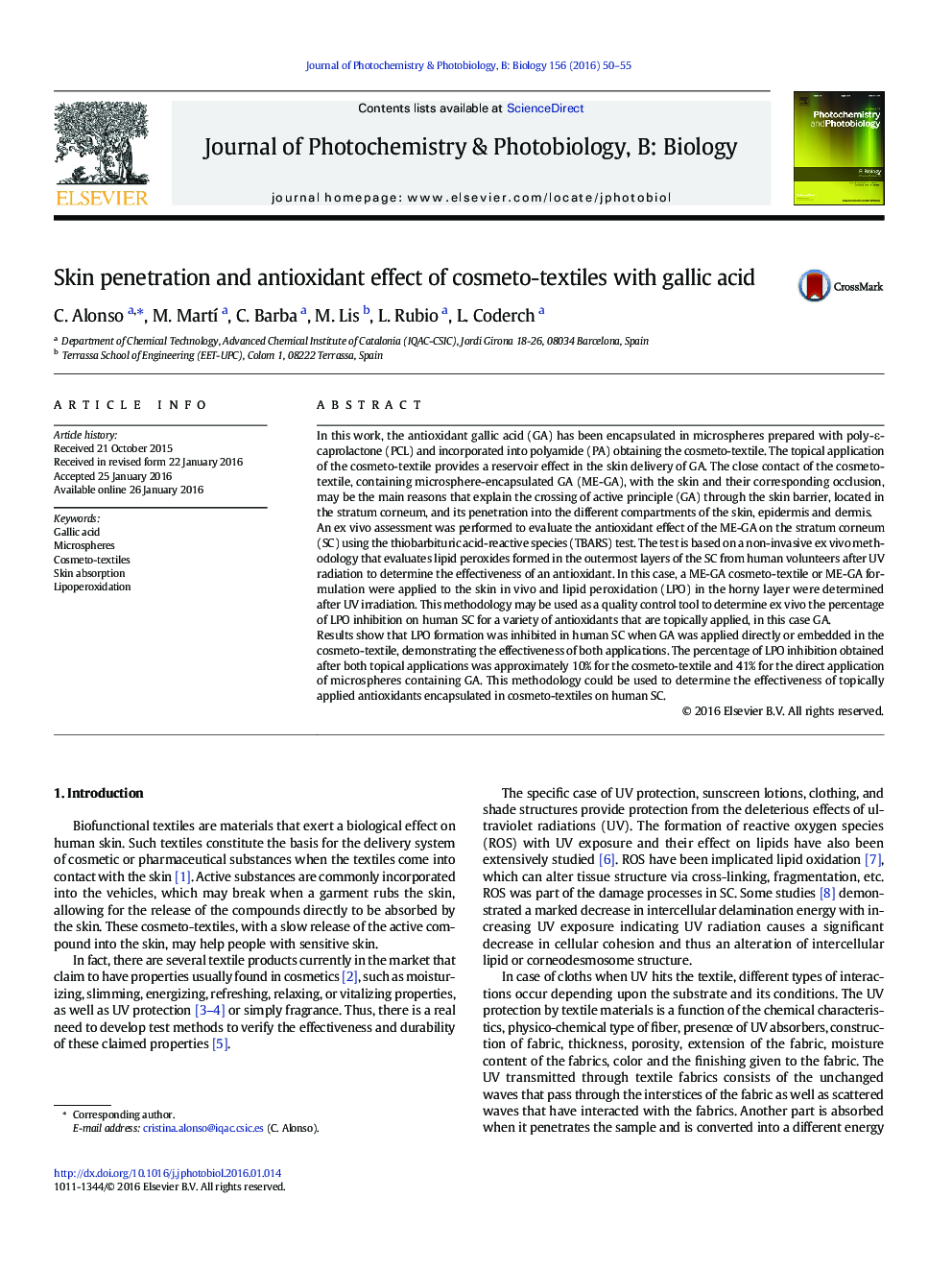| کد مقاله | کد نشریه | سال انتشار | مقاله انگلیسی | نسخه تمام متن |
|---|---|---|---|---|
| 29520 | 44416 | 2016 | 6 صفحه PDF | دانلود رایگان |
• Gallic acid (GA) was encapsulated in microspheres and applied to textiles.
• Formulation and cosmeto-textiles with GA were applied topically in volunteers.
• Lipoperoxidation was evaluated on the skin using the thiobarbituric acid test.
• Antioxidant application was effective against skin lipid oxidation.
In this work, the antioxidant gallic acid (GA) has been encapsulated in microspheres prepared with poly-ε-caprolactone (PCL) and incorporated into polyamide (PA) obtaining the cosmeto-textile. The topical application of the cosmeto-textile provides a reservoir effect in the skin delivery of GA. The close contact of the cosmeto-textile, containing microsphere-encapsulated GA (ME-GA), with the skin and their corresponding occlusion, may be the main reasons that explain the crossing of active principle (GA) through the skin barrier, located in the stratum corneum, and its penetration into the different compartments of the skin, epidermis and dermis.An ex vivo assessment was performed to evaluate the antioxidant effect of the ME-GA on the stratum corneum (SC) using the thiobarbituric acid-reactive species (TBARS) test. The test is based on a non-invasive ex vivo methodology that evaluates lipid peroxides formed in the outermost layers of the SC from human volunteers after UV radiation to determine the effectiveness of an antioxidant. In this case, a ME-GA cosmeto-textile or ME-GA formulation were applied to the skin in vivo and lipid peroxidation (LPO) in the horny layer were determined after UV irradiation. This methodology may be used as a quality control tool to determine ex vivo the percentage of LPO inhibition on human SC for a variety of antioxidants that are topically applied, in this case GA.Results show that LPO formation was inhibited in human SC when GA was applied directly or embedded in the cosmeto-textile, demonstrating the effectiveness of both applications. The percentage of LPO inhibition obtained after both topical applications was approximately 10% for the cosmeto-textile and 41% for the direct application of microspheres containing GA. This methodology could be used to determine the effectiveness of topically applied antioxidants encapsulated in cosmeto-textiles on human SC.
Figure optionsDownload as PowerPoint slide
Journal: Journal of Photochemistry and Photobiology B: Biology - Volume 156, March 2016, Pages 50–55
